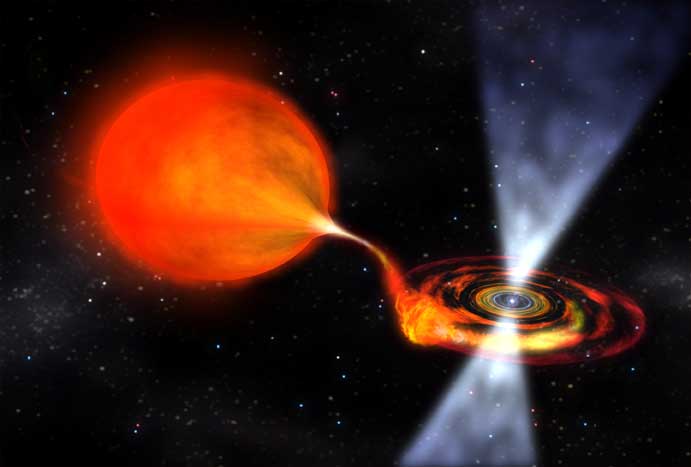EPJ D Highlight - Astrophysical plasma study benefits from new soft X-ray transition energies benchmark
- Details
- Published on 01 April 2022

The new benchmark for X-ray transition energies set for neon, carbon dioxide, and sulfur hexafluoride paves a pathway to high accuracy analysis of astrophysical plasmas.
The analysis of astrophysical plasmas is vital in the quest to learn about some of the Universe’s most powerful and mysterious objects and events such as stellar coronae and winds, cataclysmic variables, X-ray binaries containing neutron stars and black holes, supernova remnants, or outflows in active galactic nuclei. The success of such research will lead to future astrophysical X-ray observatories enabling scientists to access techniques that are currently not available to X-ray astronomy. A key requirement for the accurate interpretation of high-resolution X-ray spectra is accurate knowledge of transition energies.
A new paper published in EPJ D authored by J. Stierhof, of the Dr. Karl Remeis-Observatory and Erlangen Centre for Astroparticle Physics of Friedrich-Alexander-Universt Erlangen-Nürnberg, Bamberg, Germany, and coauthors utilizes a newly introduced experimental setup at the BESSY II synchrotron facility to provide precise calibration references in the soft X-ray regime of neon, carbon dioxide, and sulfur hexafluoride gases.
“In many research fields involving X-rays or any wavelength of light, insights are obtained by comparing measurements of emission or absorption line wavelengths with known values of transitions in various elements. A shift of the observed wavelength with respect to the known one can occur because of the velocity of the emitter or absorber,” says Stierhof. “Our work demonstrates a setup to measure transition energies of gases simultaneous with known transitions in highly charged ions having only two remaining electrons that are precisely known from theoretical calculations.”
Monochromatic X-rays from a synchrotron beamline pass through an electron beam ion trap (EBIT), where they interact with the low-density plasma produced and trapped inside the EBIT and then enter a gas photoionization cell containing the atoms or molecules under investigation. Fluorescence emission from the ions in the EBIT provides the basis for the absolute calibration of the monochromator energy scale in the experiment.
In the paper, the authors found results for the energy transition in the k-shell of carbon dioxide that agree well with previous findings. The results in the transitions demonstrated by sulfur hexafluoride showed that previous experiments have a shift of around 0.5 eV, more than twice their claimed uncertainty.
The team concludes that the statistical uncertainty in principle allows calibrations in the desired range of 1 to 10 meV, with systematic contributions currently limiting the uncertainty to around 40 to100 meV.
“Our proposed setup provides an absolute calibration for the X-ray beam, but we found that the total uncertainty is dominated by relative changes of the beam,” Stierhof concluded. “Providing an additional setup to measure these relative changes will bring us closer to the resolution limit of 10 meV.”
Stierhof, J., Kühn, S., Winter, M. et al. A new benchmark of soft X-ray transition energies of Ne, CO2, and SF6: paving a pathway towards ppm accuracy. Eur. Phys. J. D 76, 38 (2022). https://doi.org/10.1140/epjd/s10053-022-00355-0





